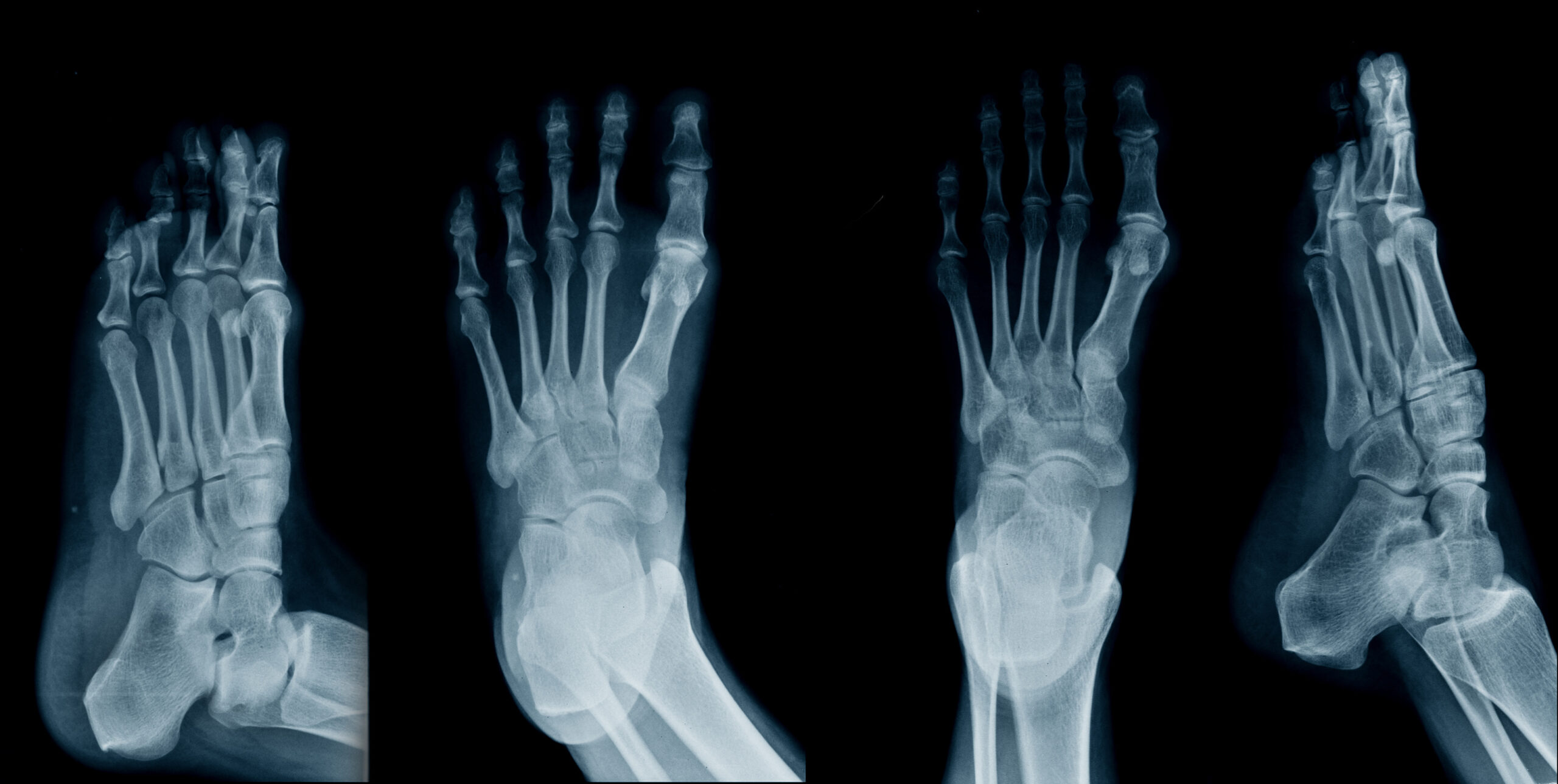A stress fracture is a small fracture, often in the bones of the leg (95%). A “stressy” is the result of accumulated micro-trauma and repetitive strain over time. Stress fractures can also be called a “fatigue fracture” due to fatigue in the musculoskeletal system, leading to a breakdown of proper shock absorption. Unlike acute fractures, which occur from an obvious trauma or accident, stress fractures develop slowly over time.
Who gets stress fractures?
Stress fractures are not so common in the general population but can be very common (20%) in high-level athletes. For example, runners, dancers or jumping athletes.
Stress fractures can occur for the following reasons.
- High load – If you are training at a high capacity but not allowing your body adequate recovery time, you will be repetitively stressing the bone tissue, which can lead to the development of a stress fracture.
- Poor technique – If you are performing your activity with poor technique, the ability of the muscles, tendons, and ligaments to absorb forces adequately can be affected. This force can then be transferred to the bone and can contribute to developing a stress fracture. This is one of the most significant contributors to having multiple stress fractures over time.
- Sudden increase or change in load – If you quickly increase the intensity, duration or frequency of your exercise, or with running, change the terrain without allowing your body time to adapt to the increase in load, it can strain the bones beyond their capacity to repair themselves, leading to a stress fracture.
- Females – Stress fractures occur two times more in females than males. Research in this area is limited, but theories as to why females are more susceptible include hormone imbalances, especially with amenorrhoea and relative energy deficit in sports (RED-S), biomechanical variances such as pelvis width and differences in bone mineral density (i.e. osteoporosis). Research does not support the oral contraceptive pill as a risk factor for developing a stress fracture.
Where do you commonly get stress fractures?
95% of stress fractures occur in the leg, ankle and foot bones. Stress fractures that occur in the anterior tibia (shin), navicular bone (low ankle/hind-foot), femoral neck (hip) or 5th metatarsal (outside of the foot) can be classified as ‘high-risk’. These anatomical locations are at higher risk of non-union and delayed healing, so more caution with treatment and return to activity is warranted. Stress fractures in the back of the tibia, shaft of the femur (thigh), fibular (outside lower leg) or first to fourth metatarsals (mid-foot bones) can be classified as ‘low risk’. These anatomical areas tend to heal well with relatively low intervention.
A smaller portion of stress fractures occur in the pelvis, sacrum and lumbar spine.
What do they feel like?
Stress fractures often begin with minor discomfort, which feels worse after training or activity and better with rest. Over time, the pain can become persistent. You may notice you are unable to engage in activities you were once able to do to the level of pain or discomfort. Eventually, stress fractures can progress to the point where there is considerable pain. They can become debilitating, preventing any weight-bearing activity. Also, due to the body’s natural inflammatory healing response, you may notice local swelling or puffiness around the area.
What are the best treatment and prevention strategies?
Recognising the signs of a stress fracture early is the best first step so treatment can be prompt and prevent further damage. You can follow the PEACE and LOVE protocol, which in summary, includes:
Rest
The most critical aspect of treating stress fractures is to rest. This may or may not be 100% rest; it could be a period of relative rest or switching to low-impact exercise. We will address your exercise load, intensity, frequency and technique. Ensuring you are avoiding activities that further strain the bone and exacerbate pain.
Ice, Compression and Elevation
You can use ice for its analgesic effect. We do not recommend using ice profusely. This can negatively affect your body’s inflammatory healing response and increase the overall healing time for a stress fracture. Using compression and elevating the stress fracture can help to reduce discomfort caused by swelling.
Immobilisation
In more severe cases, wearing a brace, cast, or crutches may be necessary to immobilise the affected bone and promote bone healing.
Pain Management
Using ice and reducing activity may be enough to manage pain. Over-the-counter paracetamol can help alleviate pain. You should avoid non-steroidal anti-inflammatories (NSAIDs) when possible due to their inhibitory effect on the body’s natural inflammatory response.
Physical Rehabilitation
Once the initial pain subsides, a structured physical therapy program can help strengthen the muscles surrounding the affected area and improve overall biomechanics to prevent future injuries.
Gradual Return to Activity
It’s essential to graduvally introduce physical activity once the bone has healed to avoid re-injury. We can guide rehabilitation safely and progressively return you to your normal or goal activity levels.
Stress fractures are commonly encountered in highly active individuals and athletes. By understanding the causes and symptoms of stress fractures, you can take proactive steps to prevent and manage a stress fracture well. When addressed quickly and appropriately, you can continue appropriate exercise through the healing process and substantially reduce your healing time. Left untreated, stress fractures can develop into severe injuries that can require long durations of immobility and non-weight bearing (six or more weeks).
If you suspect you have a stress fracture, seek care promptly to prevent further damage and ensure a speedy recovery. Listening to your body and giving it the rest it needs is vital to long-term musculoskeletal health and injury prevention.
